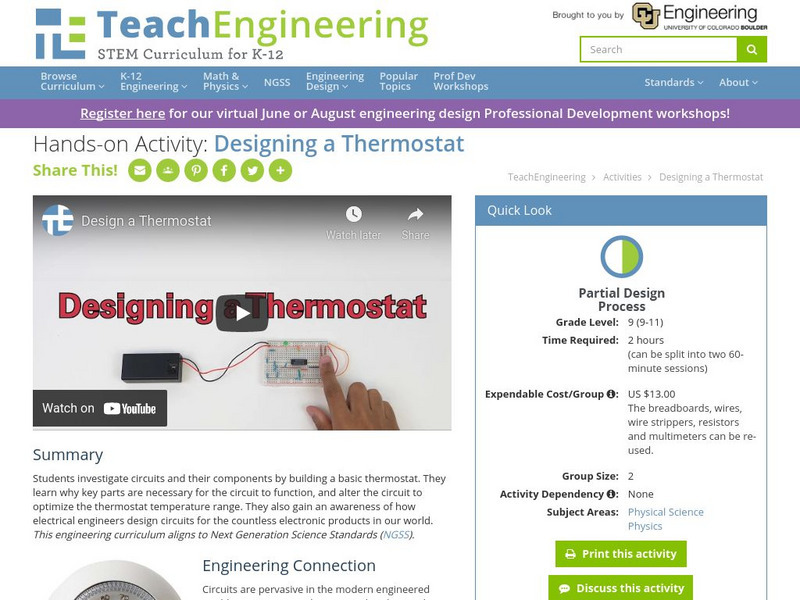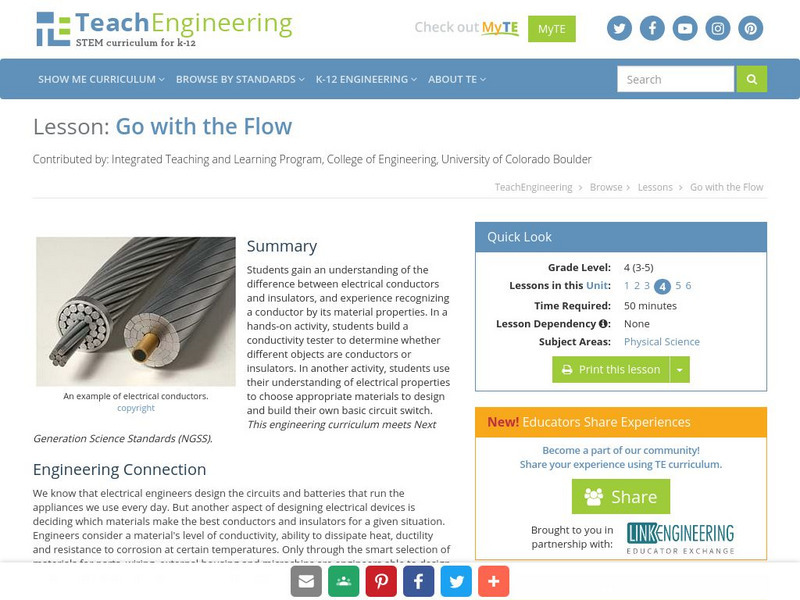US Energy Information Administration
U.s. Eia Energy Kids: Energy Sources: Electricity
A basic description of electricity and the role it plays in everyday life.
TeachEngineering
Teach Engineering: From Sunlight to Electric Current
The lesson will first explore the concept of current in electrical circuits. Current will be defined as the flow of electrons. Photovoltaic (PV) cell properties will then be introduced. This will lead to the principle of "Conservation of...
Smithsonian Institution
National Museum of American History: Fuel Cell Basics
Presents a general overview of fuel cells including what is a fuel cell, how do they work, and the different types.
TeachEngineering
Teach Engineering: Designing a Thermostat
Students investigate circuits and their components by building a basic thermostat. They learn why key parts are necessary for the circuit to function, and alter the circuit to optimize the thermostat temperature range. They also gain an...
National High Magnetic Field Laboratory
Magnet Academy: William Gilbert
William Gilbert was an English physician and natural philosopher who wrote a six-volume treatise that compiled all of the information regarding magnetism and electricity known at the time. The work included descriptions of many of...
TeachEngineering
Teach Engineering: Go With the Flow
Students gain an understanding of the difference between electrical conductors and insulators, and experience recognizing a conductor by its material properties. In a hands-on activity, students build a conductivity tester to determine...
TeachEngineering
Teach Engineering: Hands on Activity: Designing a Thermostat
By building a basic thermostat, students will explore basic circuitry and electricity. The thermostat built out of a breadboard, temperature sensor chip, amplifier, and battery creates a linear relationship between temperature of the...
Other
Natural Resources Defense Council: Global Warming Basics
The Natural Resources Defense Council (NRDC) offers a section focusing on frequently asked questions about global warming. Learn what causes global warming, if the earth is really getting hotter, whether or not there is cause for...
PBS
Pbs Learning Media: The Structure of Metal
In this interactive activity from the NOVA Web site, animations explain different aspects of the properties of metal.
National High Magnetic Field Laboratory
Magnet Academy: Oil Drop
It may look like a simple black blob, but an oil drop is in fact a phenomenally complex mix of immense molecules called hydrocarbons. Using a type of mass spectrometry called FT-ICR, scientists can analyze oil and other macromolecules...
PBS
Pbs: How Do Solar Panels Work?
We've seen them for years on rooftops, atop highway warning signs, and elsewhere, but how many of us know how solar panels actually work? How do the photovoltaic cells that lie at the heart of them turn sunlight ("photo") into...
Science Buddies
Science Buddies: Sliding Light: How to Make a Dimmer Switch With a Pencil
In this electronics science fair project, students will make a simple dimmer switch and investigate the relationship between the resistance in the circuit and the amount of light produced. The Science Buddies project ideas are set up...
Other popular searches
- Basic Electricity Worksheets
- Basic Electricity Free
- Basic Electricity Buzzer
- Basic Electricity Circuits
- Basic Electricity and Circuits
- Basic Electricity + Free
- Basic Electricity \ Free









